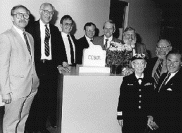Semiconductors
Pioneered with the advent of the first transistor using semiconductor materials at Bell Labs by John Bardeen and Walter Brattain, semiconductors have had a monumental impact on our society. You find them at the heart of microprocessor chips as well as transistors. Anything that’s computerized or uses radio waves depends…








